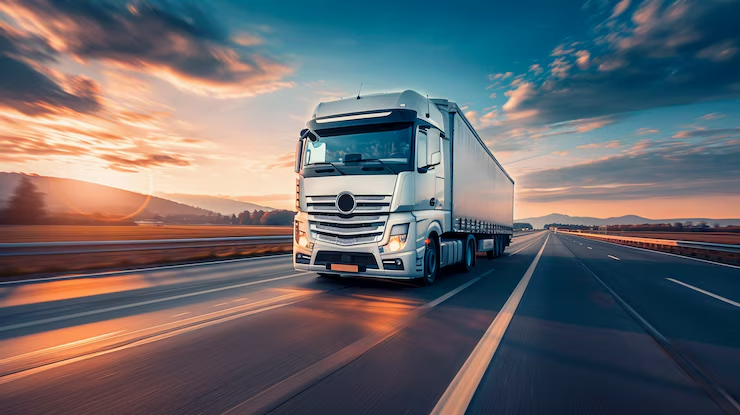The trucking industry keeps evolving at an accelerated pace, triggering innovations, improved driver support infrastructures, and closer-knit community relationships. The last few months have seen tremendous advancements in technological growth and human-oriented initiatives all around the industry. While autonomous trucks and giant electric trucks still clog the headlines, the truckers themselves are being showered with unprecedented praise and recognition by associations across the industry.
Unlike a decade ago, the driver's welfare is amplified today with more financial assistance programs, enhanced health care, and company-wide appreciation programs. Autonomous and electric trucking are also in full motion, redefining the future of freight transportation. Also, vets with years of experience as truckers now have new chances and safety improvements are taking place to make life on the road more efficient.
From revolutionary technology breakthroughs to the unsung heroes behind the scenes driving the industry shift, trucking is evolving. To know more, take a closer look at the new developments transforming road life and road warriors.

1. NHTSA Denies Petition Regarding Side Underride Guard Safety Issue
Among the trucking news making rounds is the need for the installation of underride guards in trailers.
Safety still tops the list of issues in trucking, and a recent action by the National Highway Traffic Safety Administration (NHTSA) has reopened the debate about side underride guards. NHTSA refused to consider a petition by the Institute for Safer Trucking requesting an investigation into box trailers without these safety features.
Side underride guards prevent vehicles, pedestrians, and cyclists from sliding under trailers in collisions, keeping fatalities and severe injuries down.
The petition used evidence from various crash records, yet NHTSA concluded that continuing regulation already addresses the problem. The agency cited its continuing rulemaking activity and the Advisory Committee on Underride Protection (ACUP) activities. Although no mandate presently mandates side underride guards, it remains under consideration.
Pending regulations may influence trailer design, price, and industry procedures, so it's an important issue for fleet owners and drivers to watch. For more details on this matter, check Truck Driver News.
2. Autonomous Freight Corridors Transforming Trucking
Some states have permitted exclusive autonomous freight corridors where autonomous trucks can transport freight without drivers along exclusive highway corridors. These dedicated lanes optimize logistics operations, improve efficiency, and lower operating costs.
Several companies have expanded the number of their Level 4 autonomous trucks operating on their own for long stretches. Instead of replacing drivers, trucking companies retrain these experienced hands to be remote operators monitoring several automated trucks from control hubs.
This transition redefines the iconic trucking careers and solves long-existing safety issues. With fewer driver fatigue incidents and improved freight performance, automation becomes more and more commonplace within the industry.

3. Emergency Assistance Programs Offering Relief to Truckers
Truckers frequently face difficult situations while out of town, whether dealing with medical needs or family crises.
Fortunately, several organizations have strived hard to provide aid to drivers during their time of crisis. For instance, Truckers Final Mile received major new funding, enabling more drivers to access emergency travel assistance, temporary housing solutions, and grieving assistance when sudden adversity befalls them.
Long-haul trucking often includes weeks or months away from loved ones. Returning home as soon as possible during crises and emergencies means encountering major obstacles. With the added support, drivers are not stranded when crises occur.
More truckers are able to reunite with families when they are needed most by these augmented monetary resources, generating a more sympathetic industry environment.
4. Electric Semi-trucks are Becoming Increasingly Practical
Sustainability efforts have driven dramatic innovations in electric trucking technology. Recent Tesla, Volvo, and Daimler models now offer a noteworthy range of up to 700 miles per charge. This has solved one of the major obstacles to the mass-market proliferation of electric vehicles in long-haul transportation.
Additionally, major fleet operators are more committed to high levels of electrification than ever. For example, Walmart's electric fleet has more than 1,500 electric trucks, and Amazon is working toward having half of its electric fleet in the coming years. Also, FedEx has further expanded investment in hydrogen-fueled trucks, providing another environmentally friendly solution to long-haul transport needs.
Electrification expands steadily, owing to billion-dollar federal investments adding high-speed charging facilities along major trucking corridors. With charging time decreasing to less than an hour, electrically powered trucks are becoming more practical and economical replacements for diesel-fueled equipment.

5. Additional Support for Truckers' Health and Wellness
Life on the road impacts truckers' physical and mental well-being. In response, organizations have intensified their efforts to offer integral wellness resources. The St. Christopher Truckers Relief Fund (SCF) has raised an all-time high amount of money, providing more drivers than ever before with financial and medical support when they need it.
In addition to direct funding, SCF has implemented mental health initiatives, wellness resources, and health-preventative measures for truckers experiencing chronic health conditions, fatigue, or stress. Long periods of driving and sedentary lives are usually causes of conditions such as hypertension and diabetes, so preventative measures are crucial.
This heightened emphasis on drivers' health reflects an expanding recognition of truckers' difficulties. As you can see, the industry is getting closer to enhancing drivers' quality of life and allowing them to remain on the road securely and sustainably through improved access to health support and wellness initiatives.

Final Thoughts
The trucking world is evolving, but at its core are people at the wheel. This year has shown an enhanced focus on driver health, from emergency assistance to health and appreciation programs. While that's happening, technological innovations in electric and autonomous trucking are shaping freight transportation.
As the economy changes, truckers continue to be its backbone. Their work ethic, grit, and niceness keep the world moving. Although obstacles remain, trucking is moving toward an era of prioritizing technological growth while appreciating the people facilitating that growth.